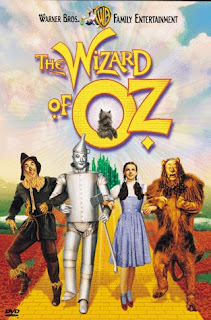AS FILM STUDIES
Monday, 8 November 2010
Monday, 20 September 2010
AS Film Studies
Unit 1: FM1 20 % (40%) Internal Assessment
Exploring Film Form
• One analysis of how the micro aspects of a chosen extract from a film of
candidate's choice produce meanings and responses (1500 words) (30)
• One creative project based on a film sequence or short film
(50: sequence or short film [40] / Reflective analysis [10])
Paper raw mark total: 80
Paper UMS total: 80
Unit 2: FM2 30% (60%) External Assessment
2½ hours Written Paper
British and American Film
Three questions, one from each section:
Section A: Response to stimulus material set by Awarding Body based on
Producers and audiences of film (40)
Section B: Topics in British Film (40)
Section C: US Film - Comparative study of two films (40)
Paper raw mark total: 120
Paper UMS total: 120
1. MACRO AND MICRO ELEMENTS OF FILM
MACRO vs MICRO features of film
Micro = Technical Codes (Camera, Mise en scène, Editing, Sound), Performance)
Macro = Narrative Structure, Plot, Themes
2. PERFORMANCE
interaction between performers
EXAMPLE – THE RELATIONSHIP BETWEEN MILLS (Brad Pitt) AND SOMERSET (Morgan Freeman) PLAYED OUT IN DAVID FINCHER’S Seven (1995)
3. SPECTATORS
You should aim to develop an awareness of your active role as spectators in working with the way the micro features of film construct meanings and contribute to the sensory impact of film.
You should aim to be confident in identifying the extent to which responses derive from the micro features of film and the extent to which they derive from personal and/or cultural identity will begin to be explored.
4. PRODUCERS
You should aim to develop your analytical and creative skills, reflecting your growing understanding and appreciation of the micro features of film and the ways in which these can be deployed in order to create meaning and produce response.
5. PRODUCERS AND AUDIENCES
UK & US Film Industries
Case studies:
Time Warner (DC Comics) & Disney (Marvel Comics):
Synergy between Studio, Production, distribution and audiences
6. BRITISH FILM & GENRE
- The British Horror film
- History of the British Horror film: Gothic literature/ Emergence of Hammer films
- Iconography of Horror: Dracula/Van Helsing – Lee/Cushing
- Contemporary British Horror: Themes and motifs - The Descent, Eden Lake, 28 Days Later etc
7. US FILM: A COMPARATIVE STUDY
Two films from a specific genre have to be examined
A comparative analysis of The Godfather (1972) and Goodfellas (1990) in terms of codes & conventions
Tuesday, 8 June 2010
Monday, 8 March 2010
Tuesday, 23 February 2010
Presentation Of Todorovs Structure
Check out this SlideShare Presentation:
Presentation Of Todorovs Structure
View more presentations from Charlotte Bee.
Narrative Theory
Check out this SlideShare Presentation:
Narrative Theory
View more presentations from guest9e3b3b.
Saturday, 21 November 2009
Readings
Further notes
Preferred readings. Eg: Wizard of Oz is a family/children’s film about an innocent girl who battles against an evil witch with the help of her unusual friends

E.g.:
Battleship Potemkin is a story about how the evil Bolsheviks persecuted the poor Russian people and how the people stood up to this oppression and brought about their freedom

Deviant or Subversive readings E.g.: Wizard of Oz is an allegory for homosexuality. The film has a sub text of promoting homosexuality and gay pride.
E.g.: The British government considered Battleship Potemkin as a propaganda film promoting communist ideology as a solution to equalities brought by Democracy and capitalism
RECEPTION THEORY
Interface: The mode of exhibition - Where and what you absorb/consume the film on: Cinema, Blu-ray, DVD, Projector, TV, Internet could have an impact on the viewing experience as a spectator
Ÿ Universal responses: Think about how you respond to a film and how does it compare to the wider public - How do filmmakers attempt to make audiences react to their narratives
Ÿ RECEPTION THEORY
Ÿ Think about what happens to you when you watch the sequence?
Ÿ What micro features are responsible for your reactions/responses
Ÿ Your ONE MICRO analysis (lighting, sound, editing, performance & movement) must be OBVIOUS within the clip
Ÿ Ideally it should be a self contained clip (3 to 5 min’s) or if it is part of a sequence it should have a clear beginning and end.
Ÿ REMEMBER to ANALYSE - DON’T just identify and describe in formal/technical terms. Ie: always give CONNOTATIONS (meanings), not just DENOTATIONS
How to storyboard a film sequence
· The purpose of a storyboard is to photograph (draw/digitalise) each and every shot of a film with a list of key information written underneath it.
· Storyboards allow a director to visualise the whole film before filming and also allows the cameraperson to understand how the film is to be shot
· Storyboards also allow you to change elements if they don’t work visually before the expensive filmmaking process
Each frame of the storyboard should contain the following information:
1. Shot number: Each shot of the storyboard must be numbered so that the intended sequence of shots can be followed
2. Framing: Is the shot a Close up? Medium shot? Long shot?
3. Drawing: A drawing visualisation of what is happening in the shot
4. Action: A brief description of what is happening in the shot
5. Dialogue: Single lines of dialogue may be written
6. Sound effects: Are there any specific sounds, diegetic, and non-diegetic?
· Each frame on the storyboard must have a shot descriptors such as FRAMING: MLS, ECU, LS etc
· Also information on movement and position such as the following abbreviations could be added:
· H/A = High Angle
· L/A = Low Angle
· POV = Point of view
· 2-SHOT = Two people in a shot
· OTS = Over the shoulder
· Track/dolly = move camera on wheeled platform
· Crab = sideways move
· Pull focus = change what is focused on
· Students will also need to think about:
· Location
· Props
· Logistics – where and when will you create your sequence (Create Production Schedule)
SOUND: An analysis of the use of Sound in Scarface (1983)
SOUND
Scarface (1983) Brian De Palma
• Diegetic (ambient, dialogue) Non-diegetic (incidental, voice over, soundtrack)
• Analyze the use of sound in Scarface, in particular the “chainsaw” sequence
• Also discuss the use of the following forms of sound:
• INCIDENTAL
• AMBIENT
• SOUNDTRACK (Songs)
• DIALOGUE – (paralinguistic codes)
Scarface (1983) Brian De Palma
• Diegetic (ambient, dialogue) Non-diegetic (incidental, voice over, soundtrack)
• Analyze the use of sound in Scarface, in particular the “chainsaw” sequence
• Also discuss the use of the following forms of sound:
• INCIDENTAL
• AMBIENT
• SOUNDTRACK (Songs)
• DIALOGUE – (paralinguistic codes)
Friday, 6 November 2009
Subscribe to:
Comments (Atom)






